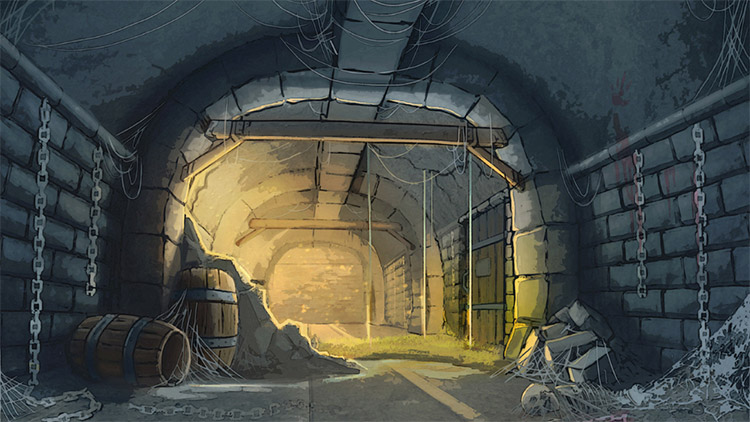Dungeoncrawling
This post is kind of "the name of the game" so to speak. If you want procedural rules to adventure through dungeons in a random way, this is the post for you.
Dungeoncrawling is very simple. The GM should have an idea of what the dungeon should be like. This could be a loose idea they can improvise off of, or a fully mapped out dungeon with multiple floors and many rooms. In the case your GM has neither, they can refer to one of the many free random dungeon generators found online. A few can be seen below.
- DNGNGEN by Kyle Druid
- OSR Random Generator by Derik A. Badman
- Random Dungeon Generator by donjon
Dungeon Encounters
As the party traverses a dungeon, the GM may have predetermined encounters placed in specific locations, or they may opt to use the Encounter Die, similar to a Hex Crawl. This more random approach is what I recommend. This does include the extra work of making an encounter list or encounter table, but it is worth the 5 minutes of prep that will take.
If using the Encounter Die, the GM should roll 1d6 each time the party enters a new room or important location within the Dungeon. On a 1, the GM chooses an Encounter from their list or rolls on their table. On a 6, there is a different outcome. Usually, I recommend treating a 6 as a change in momentum. If the party has already faced many hardships in the dungeon, a 6 could be some good luck, such as finding treasure or a pool of healing waters. On the other side of things, a 6 could turn a cakewalk of a dungeoncrawl into a deadly combat with a tough monster.
Dungeon Turns
Finally, Dungeon Turns are an important mechanic regardless of if you use random or pre-generated dungeons. Every 10 minutes that pass within the dungeon, the GM should take a Dungeon Turn. Additionally, you may time these 10 minutes in the real world on your phone or some other timer. I prefer using a real-world timer, as it breaks up the monotony and discourages players from wasting time or slacking off.
When a Dungeon Turn occurs, the GM and players each have a couple of tasks to quickly cover. Players should account for Torches that may finish burning, Spells that may end, etc. The GM should account for any NPCs or Wandering Monsters that may also be traversing the Dungeon. The GM should also roll the Encounter Die during this time. On a 1, a Wandering Monster comes across the party, or the party comes across a trap, etc. This keeps the game moving by applying pressure, big or small, on the party. On a 6, it is recommended that the GM treat it as a change in momentum, as described earlier in this post.
*Darkness and Light (Rules Reminder)
In Dungeon!, darkness a dangerous aspect of adventuring and makes sources of light important tools.
While in darkness, a Character has Disadvantage on Attack Rolls and Saves. This does not apply to Monsters, unless the GM rules that the Monster would be impeded by the lack of light. For example, a Wolf would not be impeded, but a Bandit would be.
The 5-Room Dungeon
As a quick note, consider looking up "The 5-Room Dungeon." This pdf by Roleplaying Tips outlines the idea well. I personally do not use this idea very often, as I feel overuse of the concept makes dungeons incredibly predictable and same-y. However, it is a great introduction to creating dungeons from scratch, especially if you are a new GM. Use the outline of The 5-Room Dungeon as a jumping off point but be careful to not rely on it or overuse it.

No comments:
Post a Comment